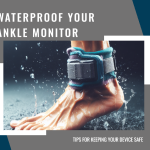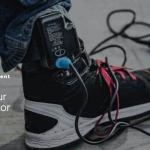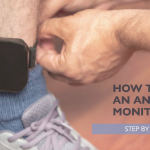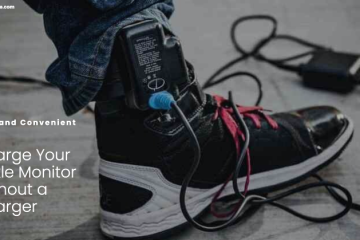Swimming with an ankle monitor may seem like a daunting task, but it is indeed possible. In fact, many individuals who are required to wear ankle monitors as part of their legal obligations want to enjoy swimming as a form of exercise or recreation. So, how can one navigate the waters while wearing an ankle monitor?
When it comes to swimming with an ankle monitor, it is crucial to understand the limitations and guidelines set by the monitoring system provider or the relevant authorities. Some ankle monitors are water-resistant and designed to withstand short periods of submersion, while others are not. Additionally, the depth and type of water you are swimming in can also impact the performance and accuracy of the ankle monitor. It is vital to consult with the monitoring system provider before taking a plunge to ensure compliance and safety.
Swimming with an ankle monitor can be challenging, but it\’s possible with proper precautions. Here\’s what you need to do:
- Consult your probation officer to ensure swimming is allowed.
- Invest in a waterproof ankle monitor cover for added protection.
- Avoid deep waters or diving to prevent damage to the monitor.
- Take shorter swim sessions to reduce the risk of prolonged exposure to water.
- Dry the ankle monitor thoroughly after swimming to prevent any issues.
Mastering Swimming with an Ankle Monitor
Swimming is a great form of exercise and a refreshing way to cool off during hot summer days. However, if you have an ankle monitor, you may be wondering if it is possible to swim while wearing it. The good news is that with proper precautions, it is possible to swim with an ankle monitor. In this article, we will explore the necessary steps to safely and comfortably swim with an ankle monitor. Read on to find out how you can make the most of your swimming experience while adhering to the guidelines set by your monitoring program.
Before we dive into the details, it is important to note that the specific guidelines for swimming with an ankle monitor may vary depending on the type of monitor you have and the rules outlined by your monitoring program. It is crucial to consult with your probation officer or the monitoring agency to fully understand the regulations and restrictions that apply to you.
Now, let\’s take a look at how you can navigate swimming with an ankle monitor:
1. Check the Guidelines
The first step before swimming with an ankle monitor is to thoroughly review the guidelines provided by your monitoring program. These guidelines will outline any restrictions or permissions related to swimming. It is essential to understand and follow these guidelines to ensure compliance.
You can request a copy of the guidelines from your probation officer or the monitoring agency. Take the time to read through them carefully and make note of any specific rules or requirements related to swimming. If you have any questions or concerns, don\’t hesitate to reach out to your probation officer for clarification.
Understanding the guidelines is important not only for your compliance but also for your safety. The rules are put in place to protect you and ensure that the ankle monitor functions properly even when exposed to water. By adhering to the guidelines, you can swim with confidence and peace of mind.
2. Choose the Right Type of Ankle Monitor
Not all ankle monitors are suitable for swimming. Some models are not designed to be submerged in water and can be damaged if exposed to moisture. To swim safely with an ankle monitor, it is crucial to choose a monitor that is specifically approved for water activities.
When selecting an ankle monitor, inquire about its water-resistant or waterproof capabilities. Look for monitors that are designed to withstand exposure to water and have undergone testing to ensure their durability. This will reduce the risk of damage to the monitor and ensure its functionality remains intact even during swimming sessions.
Consult with your monitoring program or probation officer to get recommendations on ankle monitors suitable for swimming. They can provide guidance on which models are approved for water activities and help you make an informed decision.
3. Properly Secure the Ankle Monitor
To swim comfortably and without any restrictions, it is crucial to ensure that the ankle monitor is securely fastened. A loose or poorly secured monitor can become a hindrance or even endanger your swimming experience.
Make sure to adjust the ankle strap or band according to the manufacturer\’s instructions. The monitor should fit snugly but not too tightly, as it should be comfortable to wear during your swim. Check that the buckle or fastening mechanism is securely locked in place.
If you find that the ankle monitor is shifting or becoming loose while swimming, take a break and readjust it. It is important to keep the monitor in the designated position on your ankle to ensure accurate monitoring and compliance.
4. Minimize Water Exposure
While ankle monitors designed for swimming are water-resistant or waterproof, it is still advisable to minimize water exposure whenever possible. This precaution helps to maintain the integrity of the monitor and reduces the risk of damage.
Avoid unnecessary submergence, such as diving into deep water or spending prolonged periods in the water. Instead, focus on swimming at the surface or in shallow areas where the risk of complete immersion is minimized.
Additionally, try to keep the ankle monitor away from sources of excessive moisture, such as splashing or jumping in and out of the water. These actions can increase the chances of water seeping into the monitor\’s sensitive components, potentially affecting its functionality.
5. Dry the Ankle Monitor Thoroughly
After your swimming session, it is essential to dry the ankle monitor thoroughly. Moisture can accumulate in crevices or creases, potentially causing damage or affecting the reading accuracy of the monitor.
Use a clean towel or a cloth to gently pat dry the ankle monitor, making sure to focus on any areas where water may have collected. Avoid rubbing or applying excessive pressure, as this may cause unnecessary strain on the monitor.
Allow the ankle monitor to air dry completely before putting it back on. Ensure that no moisture remains before reattaching the monitor to your ankle.
Conclusion
Swimming with an ankle monitor is possible, but it requires a thorough understanding of the guidelines and proper precautions. By following the steps outlined above and consulting with your probation officer or monitoring agency, you can safely enjoy swimming while adhering to the rules set by your monitoring program.
Remember, always prioritize your safety and compliance. If you have any concerns or questions about swimming with an ankle monitor, make sure to seek guidance from the relevant authorities. Swimming with an ankle monitor should not hinder your enjoyment of this activity, as long as you carefully follow the guidelines and take the necessary precautions.
Now that you know how to swim with an ankle monitor, dive in and make a splash!
Key Takeaways – How to Swim with Ankle Monitor
- Consult with your probation officer before attempting to swim with an ankle monitor.
- If granted permission, choose a swimming location that is safe and has lifeguards present.
- Wear a waterproof cover or sleeve specifically designed for ankle monitors.
- Ensure the ankle monitor is securely fastened and doesn\’t impede your ability to swim.
- Follow all swimming guidelines and avoid any activities that may damage or compromise the ankle monitor\’s functionality.
Frequently Asked Questions
Swimming with an ankle monitor can be challenging but not impossible. Here are some common questions and answers related to swimming with an ankle monitor.
1. Can I swim with an ankle monitor?
Swimming with an ankle monitor is often permitted, but you should check with your supervising agency or probation officer for specific guidelines. In most cases, the ankle monitor is waterproof and designed to withstand submersion in water. However, it\’s important to follow any restrictions or instructions provided by your supervising authority to ensure compliance and safety.
When swimming with an ankle monitor, it\’s crucial to avoid any activities or environments that may damage the device or interfere with its operation. Additionally, you should always prioritize your safety and swim in areas with appropriate supervision and lifeguards.
2. Are there any limitations to swimming with an ankle monitor?
While swimming with an ankle monitor is often allowed, there may be certain limitations or restrictions imposed by your supervising agency or probation officer. These limitations could include avoiding certain types of water activities, swimming in specific areas, or adhering to designated swim times.
It\’s important to communicate with your supervising authority to understand any limitations imposed and abide by them to ensure compliance. Ignoring these limitations could result in legal consequences or jeopardize your probation or monitoring arrangement.
3. What precautions should I take when swimming with an ankle monitor?
When swimming with an ankle monitor, consider taking the following precautions:
- Ensure the ankle monitor is securely fastened before entering the water.
- Avoid rough activities or contact sports while swimming to prevent any potential damage.
- Stay within the permitted areas or boundaries specified by your supervising authority.
- Follow all safety guidelines, including swimming with a buddy or in designated swimming areas.
- Regularly check the ankle monitor for any signs of damage or malfunction and report any issues immediately.
4. Can swimming affect the accuracy of the ankle monitor?
In most cases, swimming should not significantly affect the accuracy of the ankle monitor. However, it\’s essential to follow proper usage guidelines and ensure the device remains securely attached to your ankle during swimming activities.
If the ankle monitor becomes dislodged or damaged while swimming, it\’s crucial to inform your supervising agency immediately. They can guide you on the necessary steps to take, ensuring the accuracy and functionality of the device.
5. Are there any alternatives for swimming if I cannot swim with an ankle monitor?
If swimming with an ankle monitor is not permitted or recommended, you may explore alternative water activities that do not pose a risk to the device or violate any restrictions. Some alternatives include:
- Water aerobics or water-based exercises in designated areas.
- Using a swimming pool with special accommodations for individuals with ankle monitors.
- Engaging in non-submersible water activities such as canoeing, paddleboarding, or kayaking.
To swim with an ankle monitor, it is important to follow certain guidelines to ensure safety and compliance. Firstly, check with your supervising authority to determine if swimming is permitted while wearing an ankle monitor. If swimming is allowed, make sure the monitor is waterproof and properly sealed to prevent damage.
When swimming, avoid any activities that could potentially damage the ankle monitor, such as diving from high heights or excessive physical contact. It is also advisable to swim in designated areas and avoid deep or fast-moving water. Finally, always be mindful of the restrictions and requirements imposed by your supervising authority to ensure your compliance and safety.






